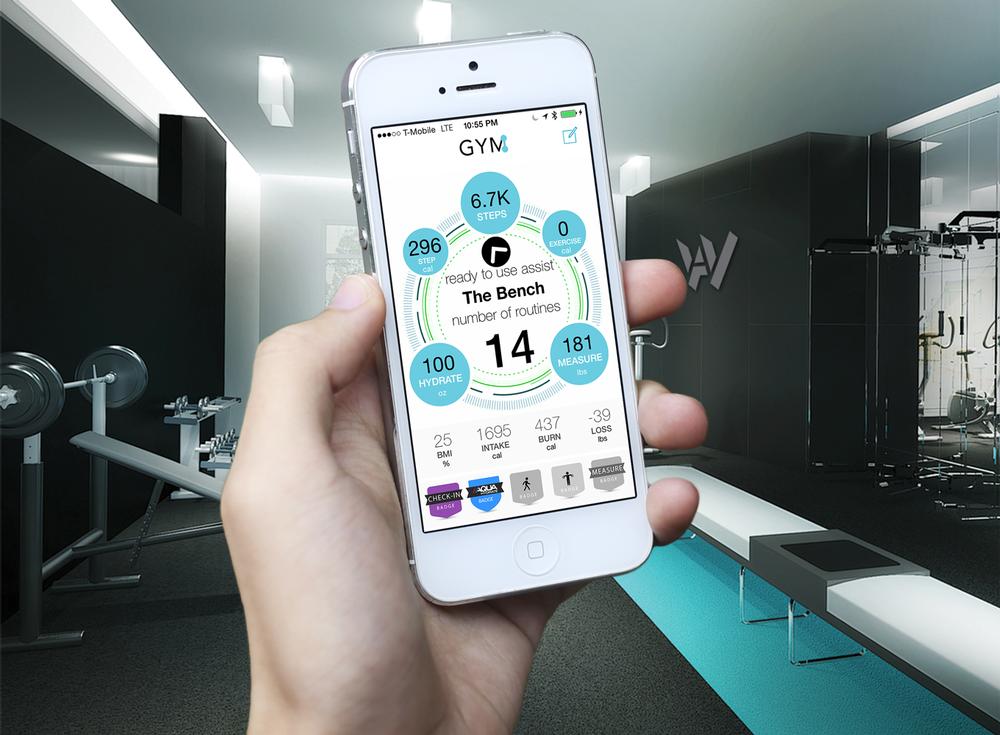The infrastructure of our industry’s membership management technology is inhibiting our ability to move forward,” claims global retention expert, Dr Paul Bedford. “More often than not it doesn’t interact with other technology, behaving like a walled garden, as software companies try to do it all themselves.”
He believes it’s a question of build or buy. “Large operators with their own software engineers are in a far better position to develop their own retention technology, such as US-brand Equinox, which has built into its mobile app an AI-led digital coach, that learns customers’ habits in order to help keep them engaged. Smaller operators can commission projects, but it’s fraught with challenges and there’s massive cost associated with keeping software up to date.
“It’s a rock and a hard place situation. To keep customers, membership management software companies (MMSC) create solutions themselves, but many are nowhere near as good as the best-in-class alternatives and it can be a challenge convincing them to integrate third-party solutions, particularly if they have their own competitor product.”
But fitness tech expert, Bryan O’Rourke, says it’s not the software providers’ fault: “There are some great MMSCs out there, but the market is complex, with many different business models. There’s no one-size-fits-all and every time someone wants to integrate a product, money has to be spent on an API.
“Added to that, consumers are exposed to technology in every aspect of their lives, so expectations outpace fitness business delivery models. The ones winning are those that move fast enough to meet consumer’s desire before others; those ‘genius’ health club brands that represent just 5 per cent of the market.”
1. Beacon technology
As demand increases from operators looking for data to better understand members, beacon technology is there to help. Beacons can detect where a customer is at any given moment, allowing operators to monitor their movements at the gym and also know what they do when they’re there. The system can also push timely messages to members.
Matthew Schober, COO of US beacon technology firm Gym Farm, says: “A year ago, MMSCs were very closed off, but they’re starting to feel the pressure. Based on the sheer size of our features and the speed at which we can build them, MMSCs realise they have to integrate with us. It’s almost a requirement to have these features built in – without them they’re behind.”
Bedford agrees: “Beacons are traditionally used for sales and in sports stadiums and shopping centres to get people to buy a hot dog or lure them into a shop, but they also offer a ‘right time, right place, right content’ opportunity for fitness providers.”
Equinox is ahead of the game, having already deployed beacons across test clubs to track users’ patterns throughout their member journey, but few other operators are using them.
“We’re sitting on some fabulous capabilities, but the market’s just not ready for it yet,” claims Schober. “Most clubs are starting to dabble with beacons, mostly using them as silent monitors to understand members’ movements, but the opportunity is massive.”
Insurance companies are a prime example, – incentives and rewards for good behaviour can be based on monitored activity, not just swiping in at the entrance.
“In many locations across the United States, English is the member’s second language, so there’s an automatic barrier when they walk into a facility,” adds Schober. Gym Farm supports 10 different languages and works as a fitness translator. “Members can wave their phone in front of a piece of kit and it will play a video on how to use it correctly. The purpose is to educate and inform – it gives members exposure to alternative equipment and the confidence to use it.”
Gym Farm’s technology integrates with equipment manufacturers (Precor and Life Fitness are the first) to automatically log members into their account as they approach the kit. It can be used to send push notifications to members in specific areas of the gym, to add workout data to health insurance records, to provide a digital personal trainer or even to order lunch as the member enters the café.
2. Artificial intelligence
Artificial Intelligence (AI) is another technology gearing up to aid retention in fitness. It could soon be creating personalised exercise programmes, simply using statistical analysis and the application of machine learning to data.
“Every two days we create as much data as we did from the beginning of time until 2003, but only a third is stored in traditional accounting format such as columns and rows, says Bedford. AI can unravel the other 70 per cent, quickly computing huge amounts of data from various formats – including images.”
CoachAi is a virtual coach using AI-driven behavioural psychology to help people turn exercise into a habit. It’s currently being piloted by three health club brands in Israel, including the country’s second largest chain, Space.
“We’ve identified the key psychological, social and logistical problems that cause dropouts and created an AI solution to address them,” says CEO, Shai Neiger.
“CoachAi has been shown to increase attendance by up to 96 per cent, by motivating people and reducing friction associated with going to the gym. We’ve tailored fun content, including video, to drive people through the difficult process of behaviour change. They can ask questions and the chatbot responds; creating a conversation which gives tailored advice. CoachAi learns how each individual communicates, so we create personalised solutions that stack the odds in their favour.”
Changing mindsets
Schober believes the revenue share provided by companies like Gym Farm will help member management companies open up to the idea of integration. He says: “The industry sees this as a breath of fresh air because everyone’s starting to work together; insurance companies send customers to clubs with better equipment, which helps our partners sell more connected equipment. This drives members into clubs, boosting the operator’s revenue. It’s a win-win, because by understanding the member journey, operators can show higher levels of care, via a personalised service.”
Operators with their hands tied, waiting for integration of these space-age capabilities, should look closely at what they already have, advises Bedford. “Existing CRM technology can be used to make a business more efficient, but also more impactful. The membership management software can generally do more than just sales, but operators often aren’t using products to their full potential. Retargeting is a good example.”
A retargeting pixel, which can be embedded into a web page, can ‘stalk’ customers during internet browsing with banner ads. But according to Bedford, it’s rarely used for anything other than sales. “It’s really easy to use this tactic to improve the customer experience too, helping the member to feel important.
Rather than always pushing sales messages, ask when they’re next coming in or if they need your help. Tell them what other members are doing that they might want to try or ask if they fancy a swim. Marketing teams are so used to thinking about selling they often don’t see the retention opportunity.”
However, O’Rourke believes it isn’t simply a case of asking, ‘what are the best products?’. He advises operators to spend time auditing how their business addresses the user experience and how they’re going to compete. “You can’t just keep layering on solutions to an existing business model without scrubbing down to the base boards sometimes. You can have a great product, but if you’re just putting that on top of the original system it won’t work.”
























































